With millions of people quitting their jobs as part of the Great Resignation, there’s a good chance your company will experience some turnover. That’s not uncommon, especially in industries like retail, hospitality, food service, healthcare, etc.
However, if you’re hemorrhaging talent and losing employees at an alarming rate, it’s time to figure out why. Where are employees going? Are certain groups of employees leaving more than others, e.g. people with similar job titles, skills, demographics, etc.?
These are important trends to be aware of. For example, if the majority of your former employees all moved to one or two companies, you need to know right away so you can investigate and figure out what caused the exodus. Do the other companies pay more? Do they offer more flexible work hours?
That’s where Claro Analytics comes in. With hyper-granular labor data updated daily, companies can use Claro Analytics to understand where employees are going right now and staunch the outflow of talent before it becomes too big of a problem.
Here are a few ways to use Claro Analytics to figure out where your employees are going and why.
Step 1: Find out where your employees went
Before you can make any changes to improve retention and recruitment, you need to find out where your employees are going. What companies are they working for now?
Let’s take Microsoft, for example. Using a simple search in Claro Analytics' platform, we can see the top companies that former Microsoft employees are working at now.
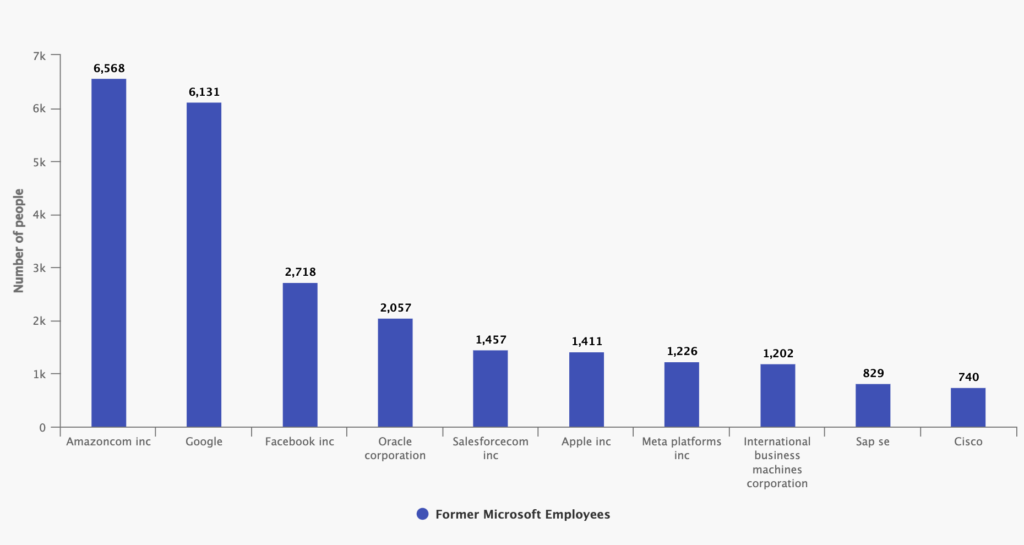
Interestingly, many have moved on to Amazon, Google, Facebook, Oracle, Salesforce, and more. If you’re Microsoft, you’ll be interested to see that a lot of your employees are leaving for other top tech companies.
We can also drill down even further to the job title level. For example, if Microsoft is losing a lot of software engineers, they can do a search in Claro Analytics to find out where former Microsoft software engineers are working now. In this case, Google is the top culprit.
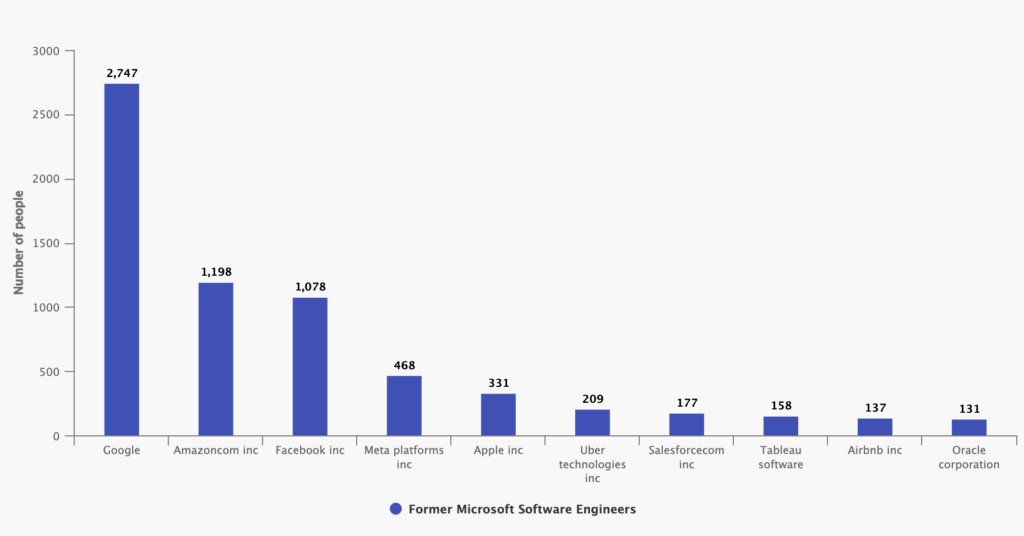
Now let’s swap industries and see what the general turnover trend looks like for Bank of America. Similar to the pattern from Microsoft, we see a lot of other banking/financial competitors like Wells Fargo, JP Morgan, Morgan Stanley, Citigroup, and more. Again, consider the true cost in losing years worth of experience and institutional knowledge to your competitors.
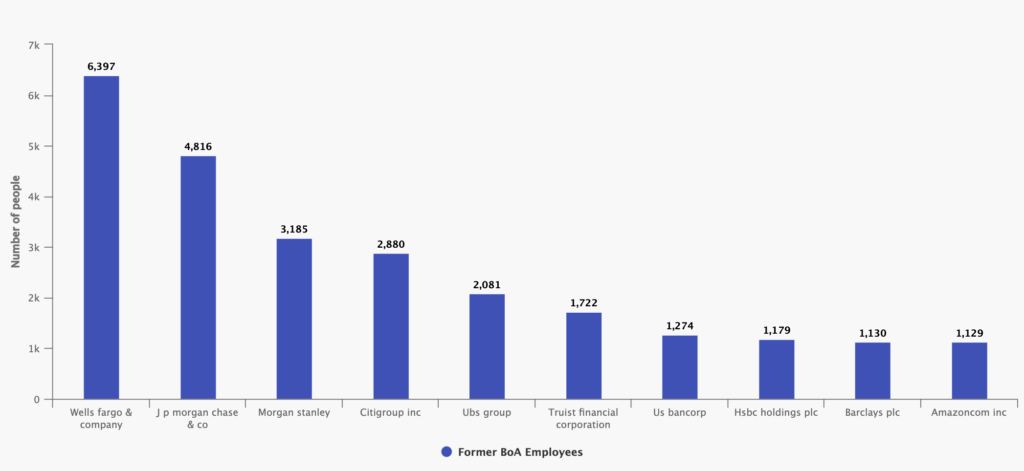
And if, for any reason, you want to see info at the individual profile level, you can also do that in Claro Analytics. For reference, in the image below, you can see a list of people who used to work at Bank of America and now work at Wells Fargo.

Understanding where your employees are going is critical to knowing what to do next.
For example, if you’re Microsoft, and you see that your former employees are largely moving to Amazon, Google, and Facebook, your next step might be to figure out what those companies are offering that you’re not. (More on that in step three).
Regardless, you’ll have a better idea of what you need to do to retain the employees you have and how to recruit more competitively in the future.
Step 2: Determine what skills you’re losing the most
Obviously, it’s never great to lose employees, especially with how tight the labor market is right now. But when you lose a lot of talent in a relatively short amount of time, it becomes quite difficult to replace all the skills you lost – or even to know which skills you’re missing now.
We can use Claro Analytics again to figure out what skills former employees took with them to new companies. In this example, let’s look at our group of former Microsoft employees. Here are some of the top skills they took with them to new jobs.
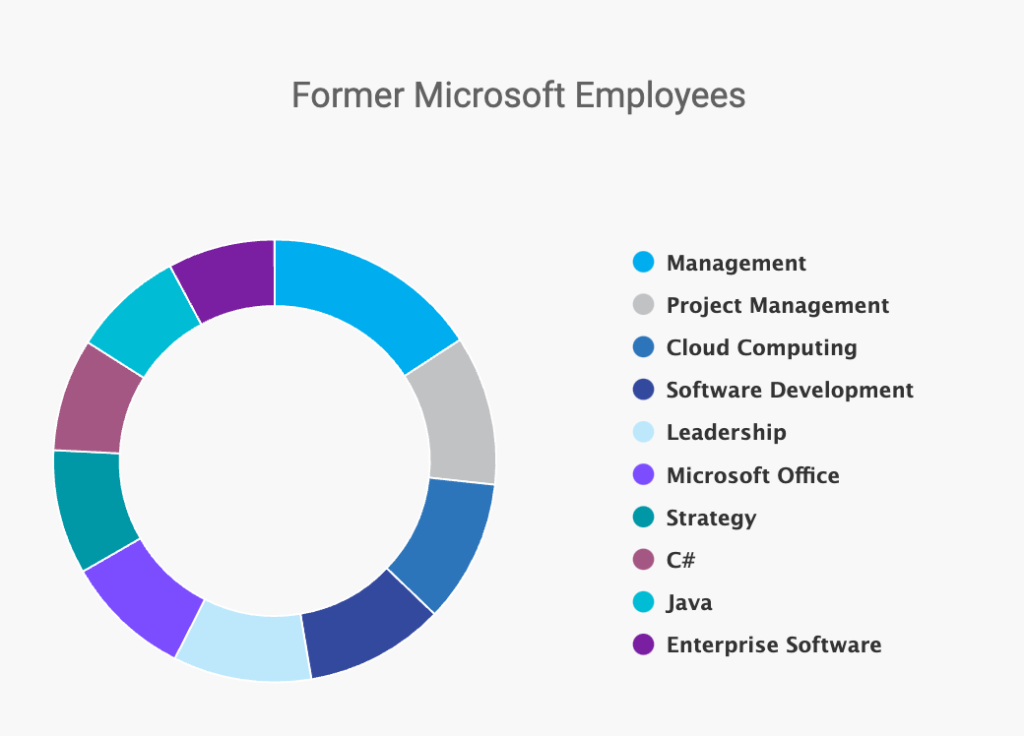
It’s an interesting mix of technical and soft skills, with the relatively significant loss of management and leadership skills being especially noteworthy.
If you’re Microsoft, this is one more tool to help you create a retention and recruitment strategy. Which skills have you lost the most recently? And how can you protect the skillsets you still have and strategically recruit to fill the gaps?
And if you really want to drill down (remember what we said about being granular?), you can look at the skills of former employees who went to a specific company. In our example, if Microsoft wanted to see what skills their former employees who now work at Meta have, they can do that in Claro.
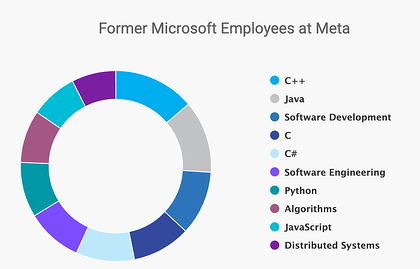
Step 3: Investigate what your competitors are doing
As we mentioned earlier, knowing where your former employees are going is just the first step toward understanding and then preventing turnover. Next, you need to know what your competitors are doing.
Using Claro Analytics, you can find all of your competitor’s job postings (for the company as a whole, or drilled down by job title, location, salary, etc.) and export them as a CSV file. You can see what wages they’re offering, which locations the jobs are in, what jobs they’re hiring for, and more.
More importantly, you can compare this info versus your internal metrics to see how you measure up.
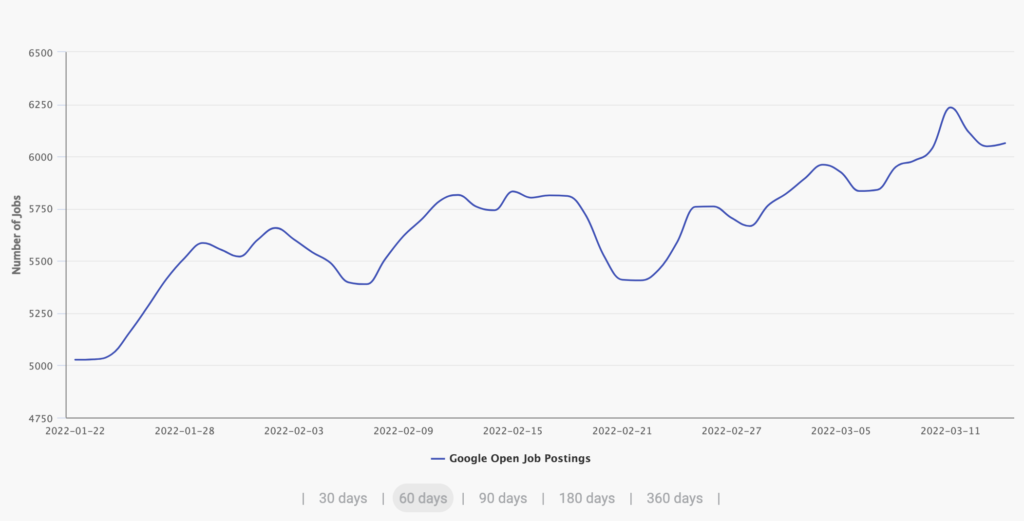
You can also see your competitor’s job growth activity over the last 30, 60, 90, 180, and 360 days. In the photo above, we can see Google’s job growth over the last two months. If you’re one of Google’s competitors, and you know you’ve already lost a lot of talent to Google, the recent increase in their number of open jobs could definitely add a sense of urgency to your retention efforts.
Conclusion
Bottom line, if you want to be competitive in today’s job market, you need to know exactly what you’re up against. And you need to know what’s happening right now – not what happened six months ago, a year ago, or 3 years ago. (Looking at you, BLS 😉)
With Claro Analytics' actionable data, you can understand in real time where your former employees are going and use that data to inform your retention and recruitment strategies.
Looking to make faster, smarter decisions with real-time data? Claro Analytics can help! Request a demo today.
